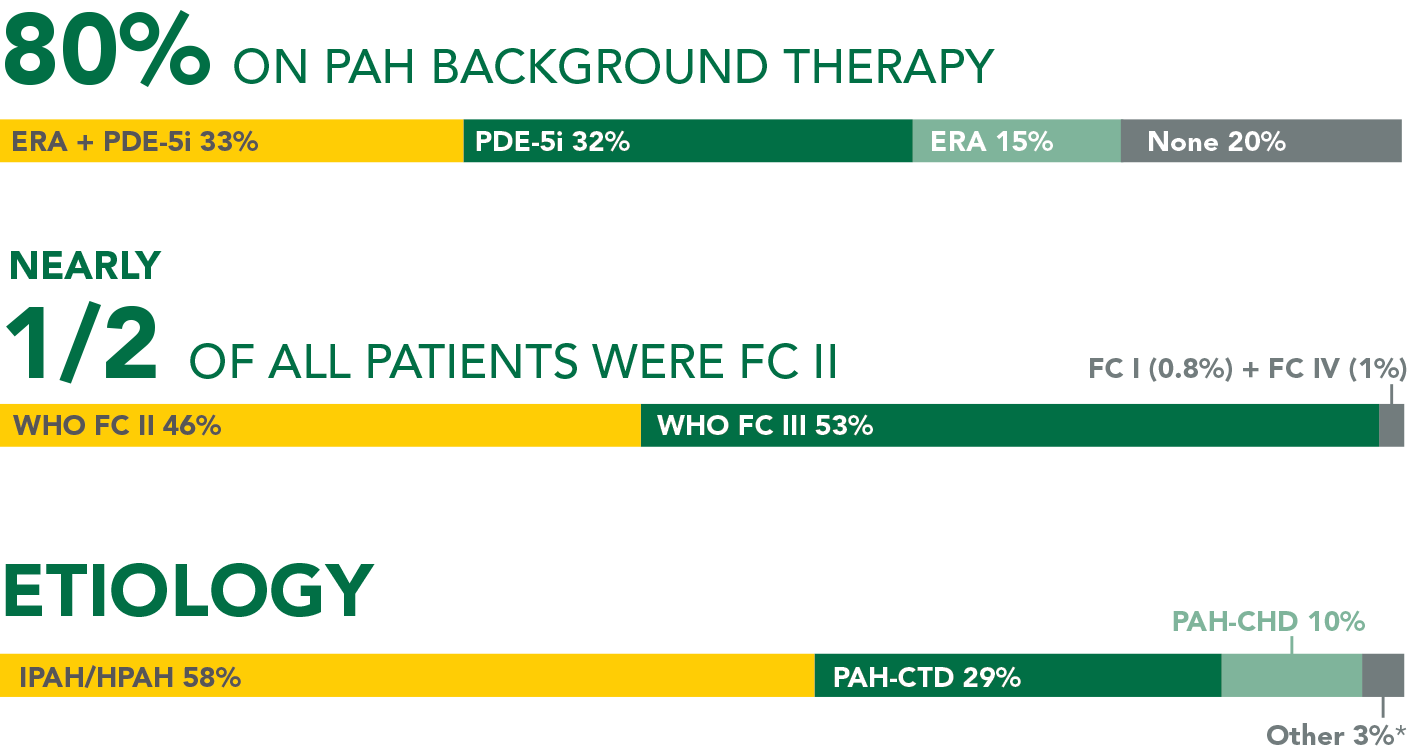When you decide to start your patient on treatment with UPTRAVI®, it’s important to set goals and expectations with them.
Before starting UPTRAVI®:
- Ensure patients know that dose adjustment (titration) is necessary and temporary1
- Inform patients and caregivers of ways to MANAGE SIDE EFFECTS before patients start treatment
- Ask patients what’s most important to them in their treatment with UPTRAVI®. Let them know what to expect and who to contact to help
them and their loved ones be prepared for treatment - Encourage patients to TRACK HOW THEY ARE FEELING during treatment and to contact you if they have questions about any side effects
UPTRAVI® Dose Adjustment Phase—Helps Meet Individual Patient Needs1
UPTRAVI® dosing is unique to each patient based on how their body responds and adjusts to treatment. The dose adjustment phase is how you find your patient’s personal maintenance dose.
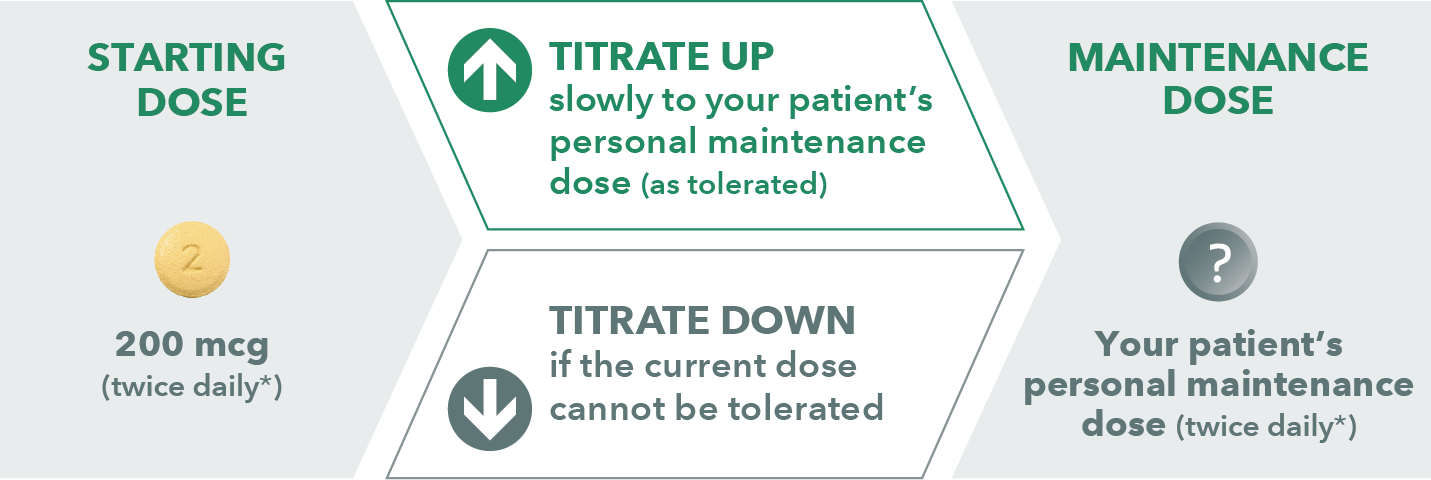
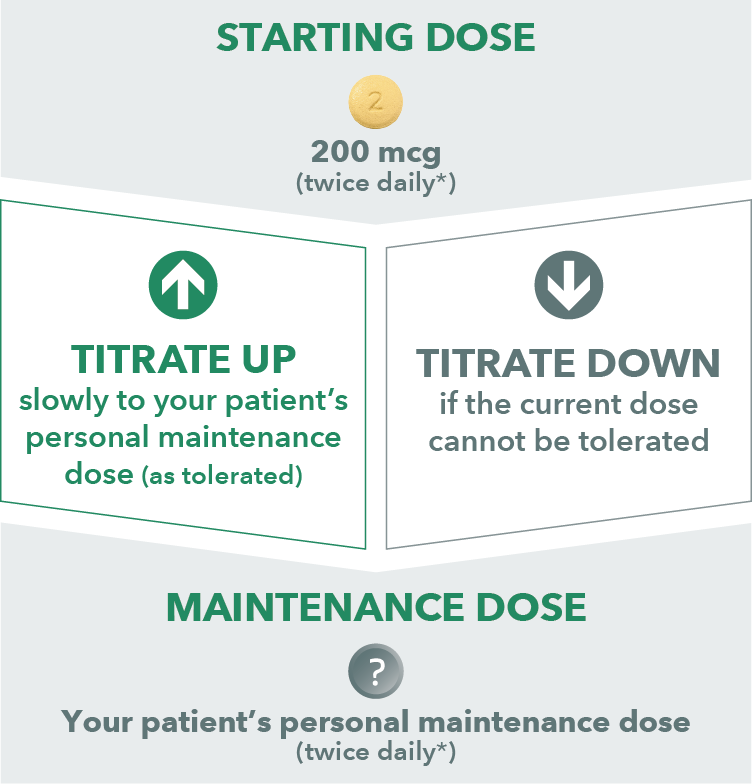
*Once daily for patients with moderate hepatic impairment (Child-Pugh class B) and co-administration with moderate CYP2C8 inhibitors (eg, clopidogrel, deferasirox, and teriflunomide). Increase in increments of 200 mcg once daily at weekly intervals.
Recommended starting dose is 200 mcg twice daily. Tolerability may be improved when taken with food. Increase by 200 mcg twice daily, usually at weekly intervals, to the highest tolerated dose up to 1600 mcg twice daily. If dose is not tolerated, reduce to the previous tolerated dose.
- If a dose of UPTRAVI® is missed, patients should take the missed dose as soon as possible unless the next dose is within the next 6 hours
- If treatment is missed for 3 days or more, restart UPTRAVI® at a lower dose and then retitrate
After the dose adjustment phase1
Once each patient reaches their personal dose (maintenance), a single-tablet equivalent is prescribed BID. There are 8 different single-tablet strengths of UPTRAVI®, each a unique color.
UPTRAVI® OFFERS A RANGE OF DOSE STRENGTHS TO ACCOMMODATE EACH PATIENT’s personal MAINTENANCE dose









TREATMENT EFFECT OF UPTRAVI® WAS SIMILAR, REGARDLESS OF THE PERSONAL MAINTENANCE DOSE ACHIEVED1-3
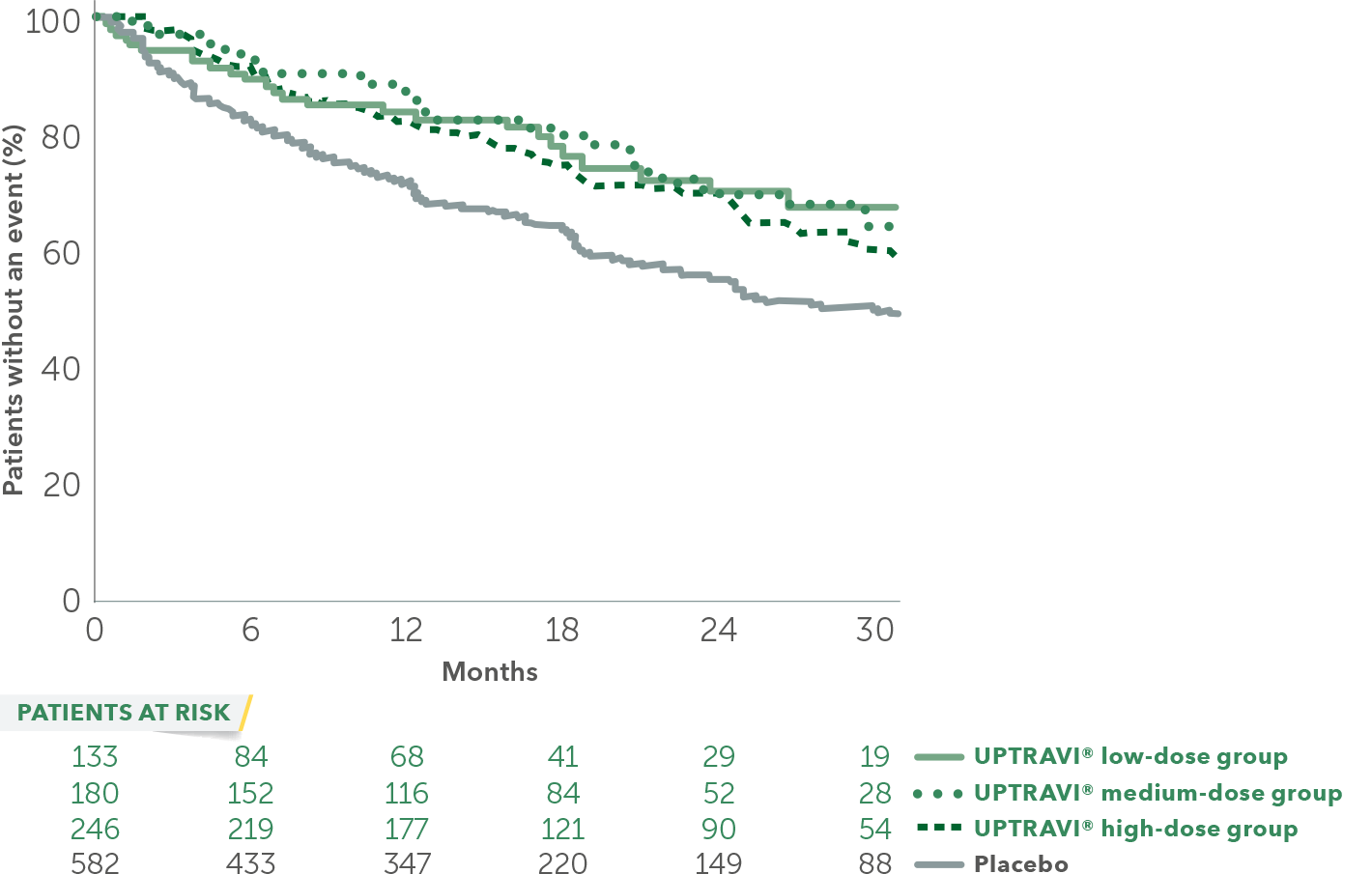
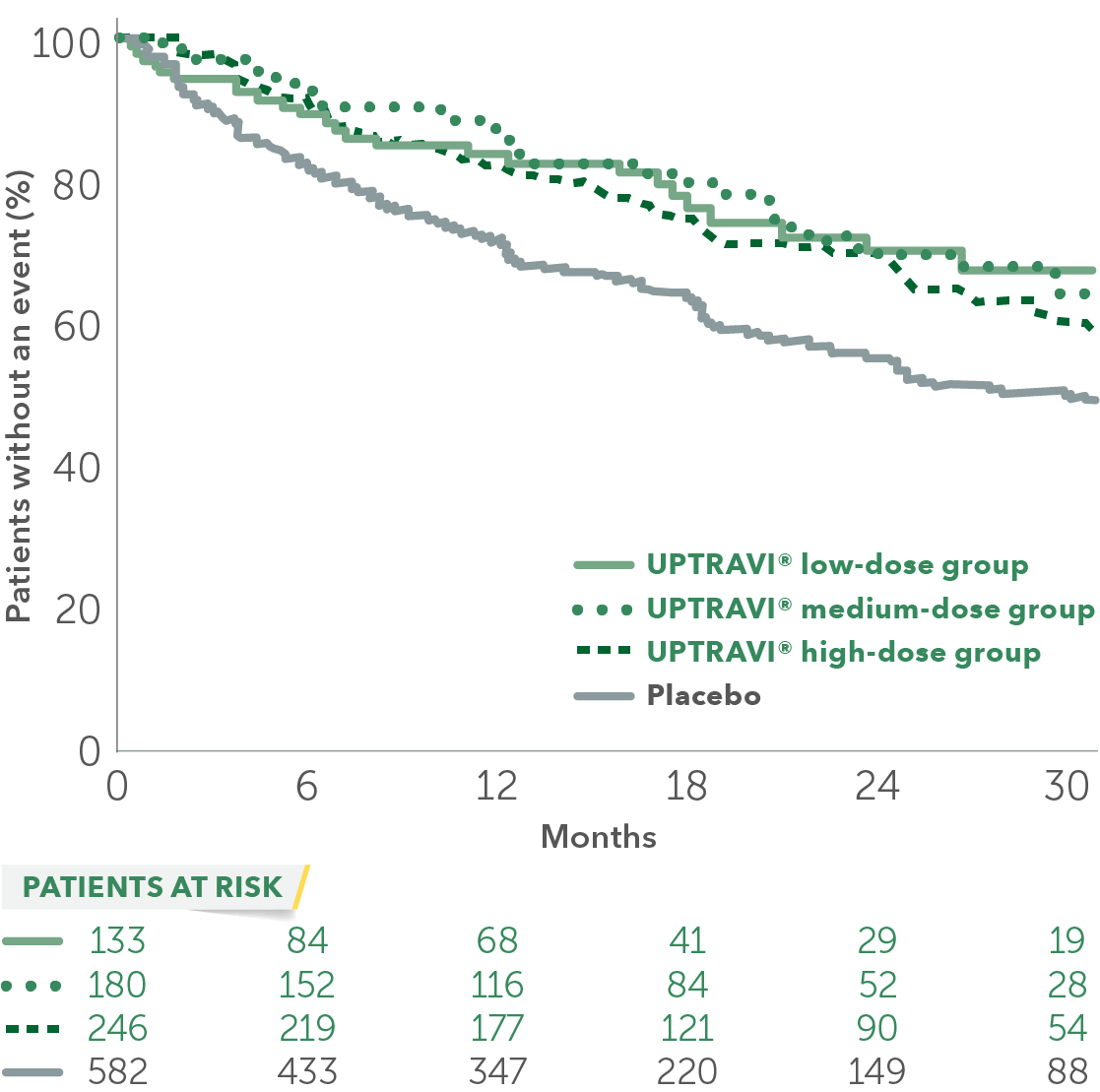
Efficacy by dose group†:
- 40%RISK REDUCTION
(low dose:
200 mcg to 400 mcg)
HR 0.60 (95% CI: 0.41, 0.88) - 47%RISK REDUCTION
(medium dose:
600 mcg to 1000 mcg)
HR 0.53 (95% CI: 0.38, 0.72) - 36%RISK REDUCTION
(high dose:
1200 mcg to 1600 mcg)
HR 0.64 (95% CI: 0.49, 0.82)
UPTRAVI® doses were achieved across the 3 prespecified groups in the GRIPHON trial‡
- 200 mcg to 400 mcg BID (low dose): 23% of patients (n=133)
- 600 mcg to 1000 mcg BID (medium dose): 31% of patients (n=179)
- 1200 mcg to 1600 mcg BID (high dose): 43% of patients (n=246)





